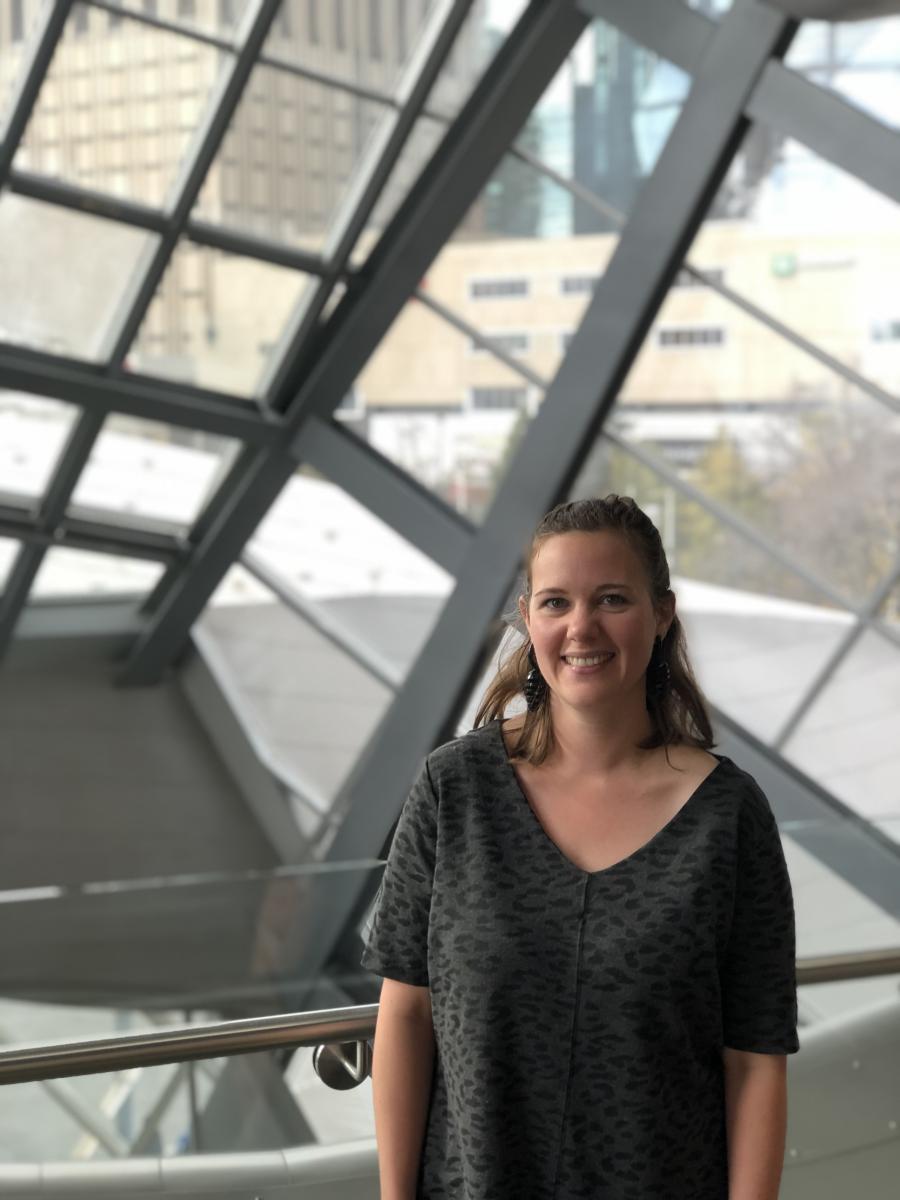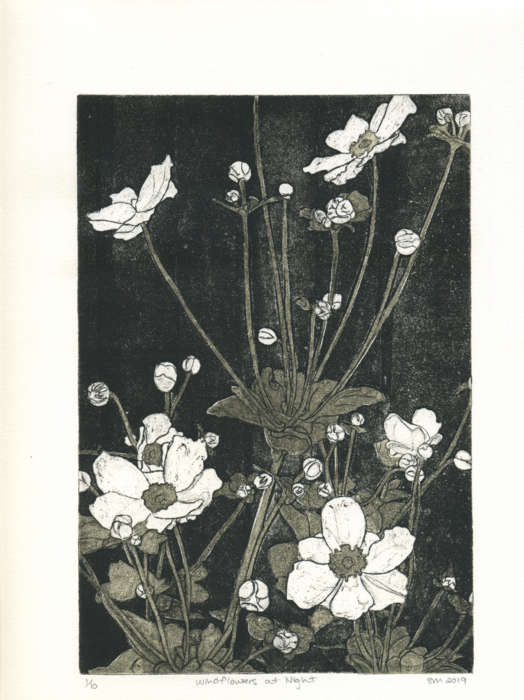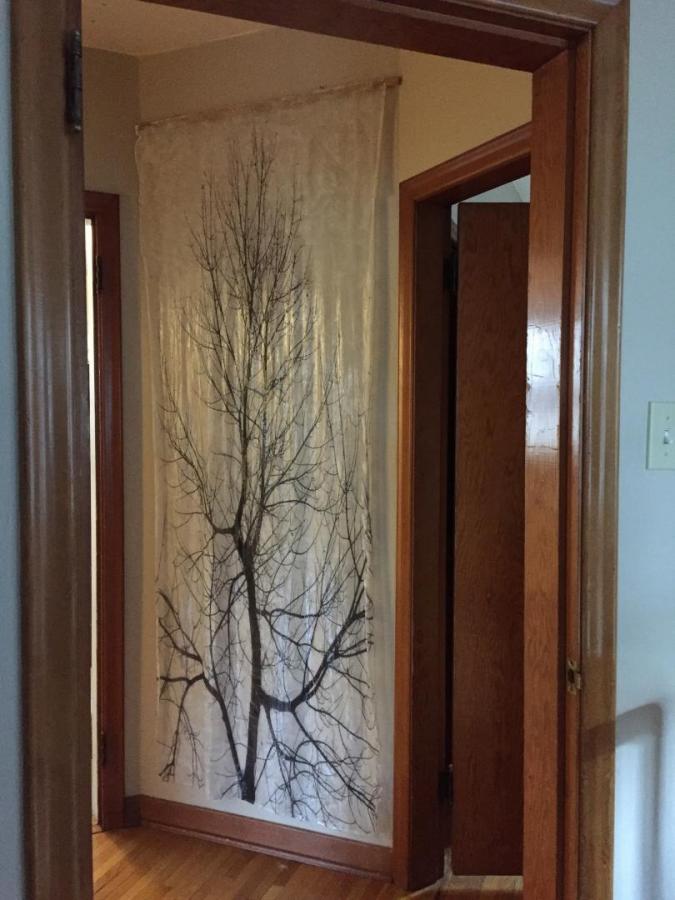
Hi Sara! Tell us about your role.
Hi, I’m Sara McKarney, Exhibitions Manager at the AGA. My job is to oversee the coordination of the exhibitions and special projects at the Art Gallery of Alberta. I work with the curators and artists directly, finding out what their project is about and work with the rest of our team to make it happen. What I do on a day-to-day basis ranges from writing contracts, arranging shipping, making floorplan mock ups for the exhibition and helping determine technical needs for us to actually show the work. I do a lot of information gathering and research, as well as a lot of troubleshooting as a show is being developed. The goal is to get everything sorted out so that when the work is here and our preparators are ready to install it, things can go as smoothly as possible. I also help with a lot of bigger picture things at the gallery like setting up the timing for installs for the year and budgeting.
That sounds interesting! A lot of people are probably curious what education, skills or abilities are required to become Exhibitions Manager. Can you share a bit about your background?
I ended up in my position through other periphery experience. I started out pursuing a career as an artist, going to MacEwan University for their Fine Arts Diploma and then transferring to the University of Lethbridge to finish my BFA as a general studio specialization. I had always volunteered at art galleries and had internship opportunities through some museum studies courses. Eventually I was hired at the Southern Alberta Art Gallery. I came back to Edmonton, worked as a Gallery Attendant for a year and then moved to Banff to do the Visual Arts Preparatorial Work Study, working under the mentorship of their Senior Preparator. It was an opportunity to learn more about what it takes to put on an exhibition, from framing to carpentry work and how to take care of a collection. After that, I was invited back to the AGA as Preparator and did that amongst other contract jobs for five years before I was offered a full-time job at the Gallery as Exhibitions Coordinator, which led to my current role. The skills I have gained through this would be problem-solving, a thorough understanding of the technical needs of handling artwork, an understanding of contracts and basics of finance, attention to detail and of course, a preparedness for curveballs!
Sounds like a long but rewarding path! What do you like most about your job?
I like that my job is not easy and often I find myself doing things that are a bit unusual. There is a lot of problem solving involved and I am always learning something new. I often need to look into artist requests and in the process, I have to explain to people who do not work in the arts why I need to rent a hot tub for 6 months for public use, or explain to an engineer what strange object I need to make sure our floors can support, or to a city Forestry employee that I am looking for trees that I can heat treat for an exhibition.
Your work, Wind Flowers at Night, was available for bid in the Art Gallery’s recent Art on the Block (AOTB) auction. Can you tell us a bit more about the piece/your own artistic craft?

Sara McKarney, “Wind Flowers at Night”, 2019. Etching and aquatint on rag paper, 28 x 20 cm (framed size 41 x 33 cm). Courtesy of the artist
Over the last few years, my studio practice has shifted to focus on printmaking. I have been working out of SNAP for the last couple years and Wind Flowers at Night is the last piece I was able to produce at there old space on 121 St. It is an etching, so the drawing made in a copper plate with acid, and then that plate is printed on a printing press. I make etchings in a similar way to how I would draw something, in that I will etch the plate with a drawing and then ‘erase’ the drawing but sanding down the plate and go back into it multiple times. This process leaves remnants of the previous drawing behind and gives the finished image a texture and complexity that I really like. The version that was at AOTB is a proof of this plate, but I ended up working into it more, making an edition of 10 of prints after this one, but with added in Chine-collé (a printmaking technique). For that I cut off-white rice paper to the shape of the stems then the skinny little pieces of paper were in place on top of the inked up copper plate. When I ran them through the press, the paper was glued and printed on at the same time of the main sheet of paper. It was a tedious process that only worked about half of the time, but I am so happy with how it turned out.
If you did miss seeing my work at AOTB or just want to see more of the work I make, you can find more of this series and previous work in the Art Rental and Sales Gallery on the lower level of the AGA.
We’d love to see a favourite piece you have at home.

I have a lot of art at home that I love, but I think my favorite is probably a piece by Stacy Cann from her series Forest for the Trees. It is an 8’ tall gel transfer. To make this, she would have put layers of acrylic gel medium on top of a printed photo. After it dried she would have washed off the paper and the ink from the photo stays in the gel. I have seen and done lots of gel transfers myself, but this is particularly interesting because normally you use the gel medium to transfer the photo image to another surface. For this one though, the artist used enough gel and this was substantial enough not to need a backing which makes it into a semi-transparent plastic ghost image.
What advice would you give to someone looking to get into your line of work?
Education is important to give you a good foundation to work from, but really, your experience and reputation is what will set you apart from everyone else. Take the opportunities that come your way and make the most of them. If you work hard, people will notice.
Thank you, Sara!



